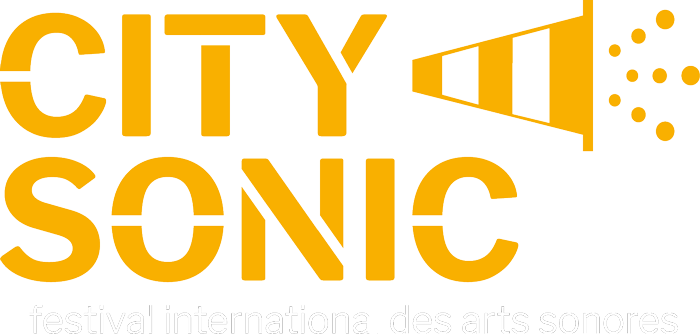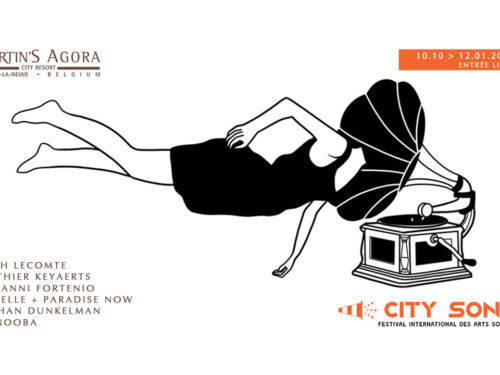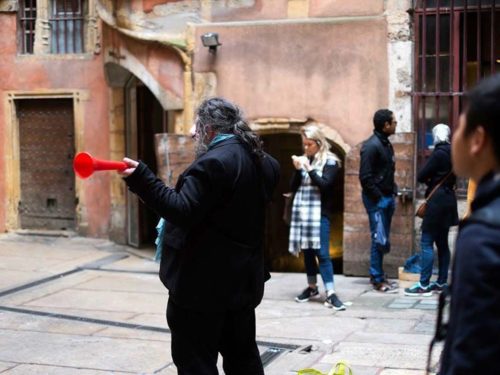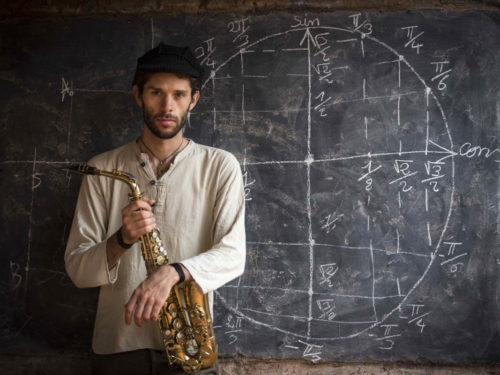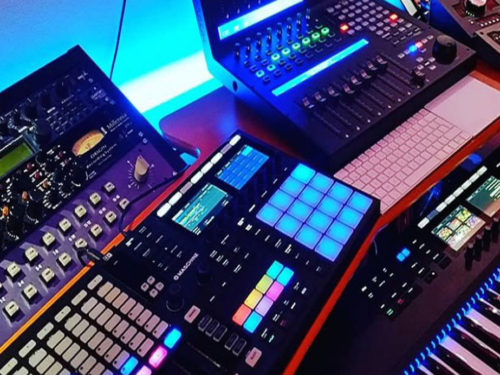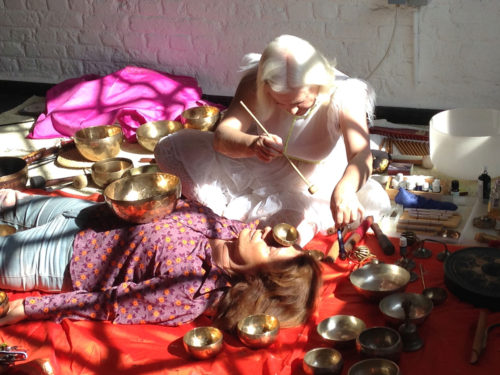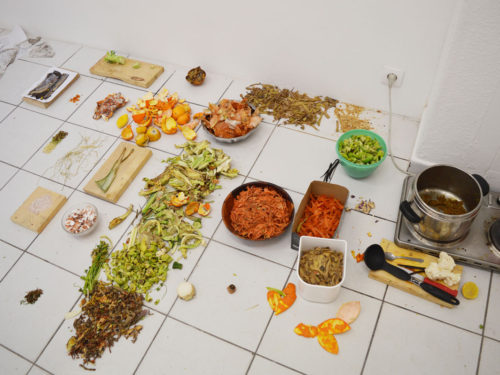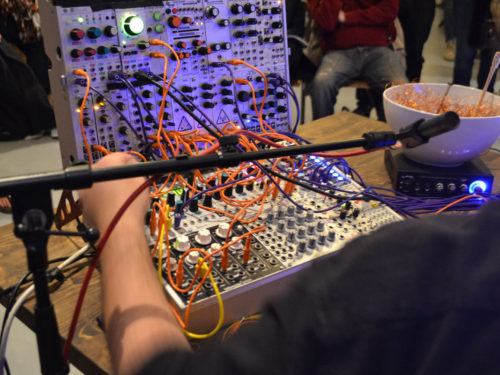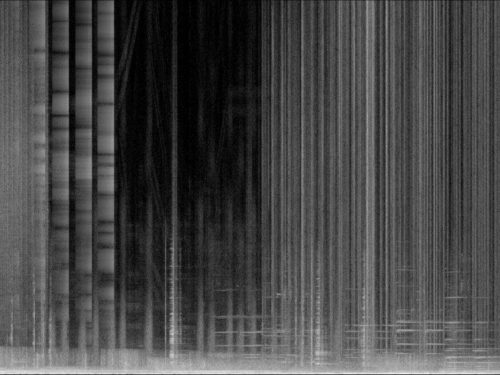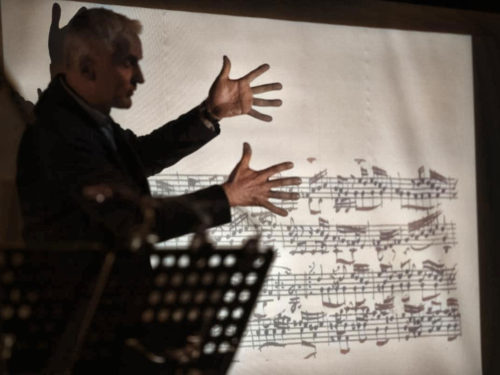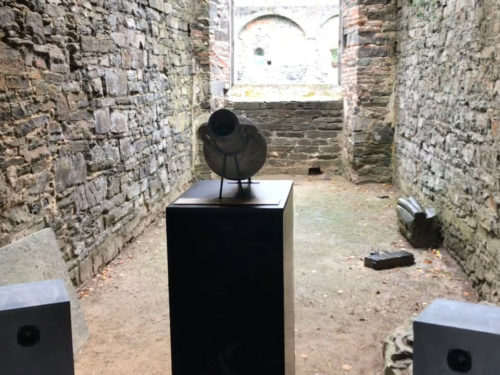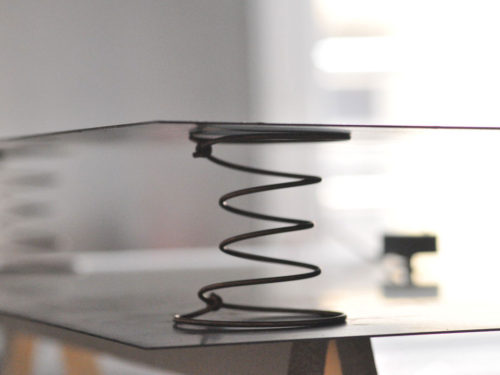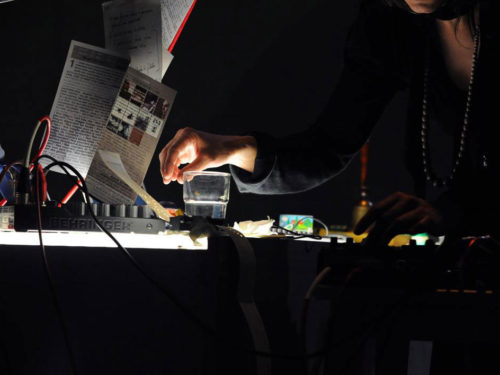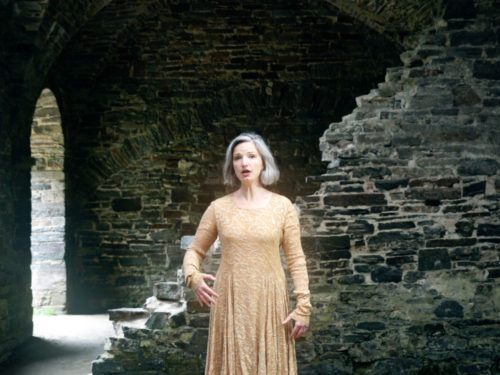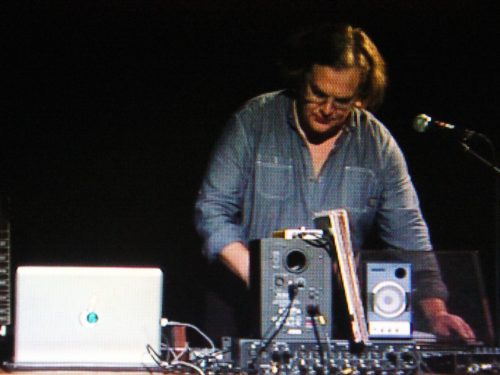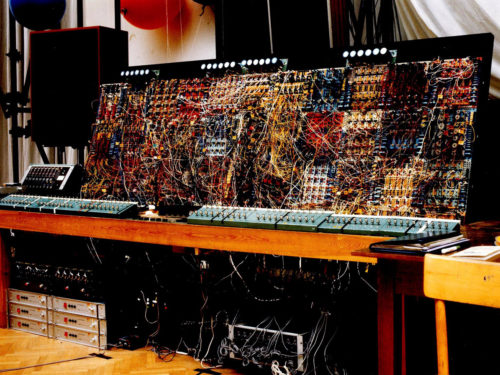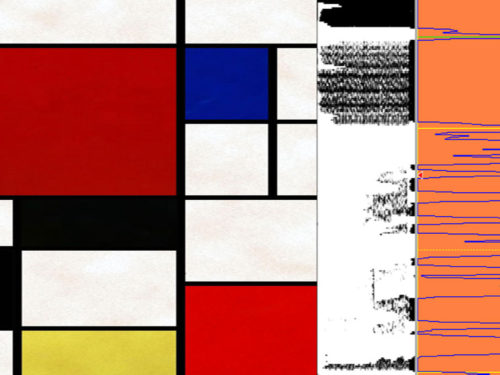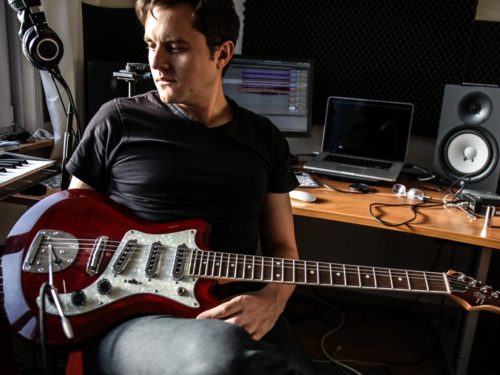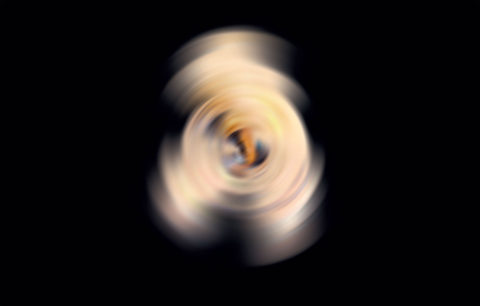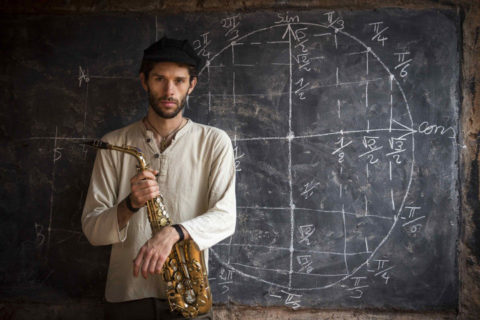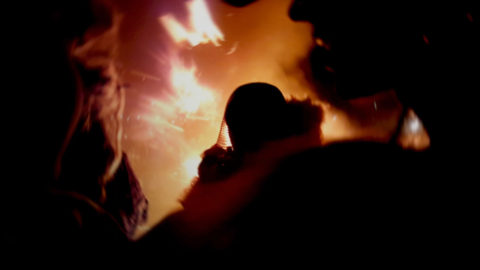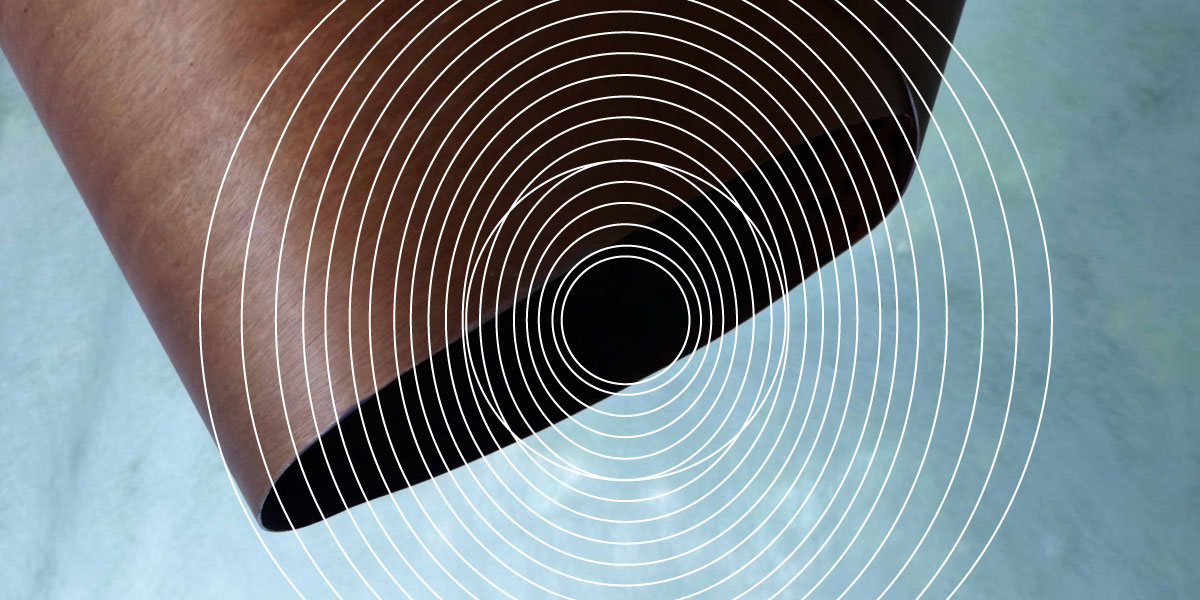
Twitch#1
How to combine the respective approaches of improvised instrumental music and electroacoustic music written in studio? How to preserve our respective assets and strengthen one another?
The instrumentalist, an improvisational creator, adapts his game to the real-time transformations proposed and adapted by the electroacoustic part to a saxophonist’s play. The composer or sonic creator, provides the instrumentalist with an augmented instrument, enriched by the specific transformations of the electroacoustic creation of sound material, projected into multiphonic space. From his side, he reproduces, at the closest : a creation of improvised sequences and/or prepared writing cells, transformed and remixed in real time.
Co-création Maurice Charles JJ (Be) (Saxophones) + Stephan Dunkelman (Be) (Processing/live spatialization and music).
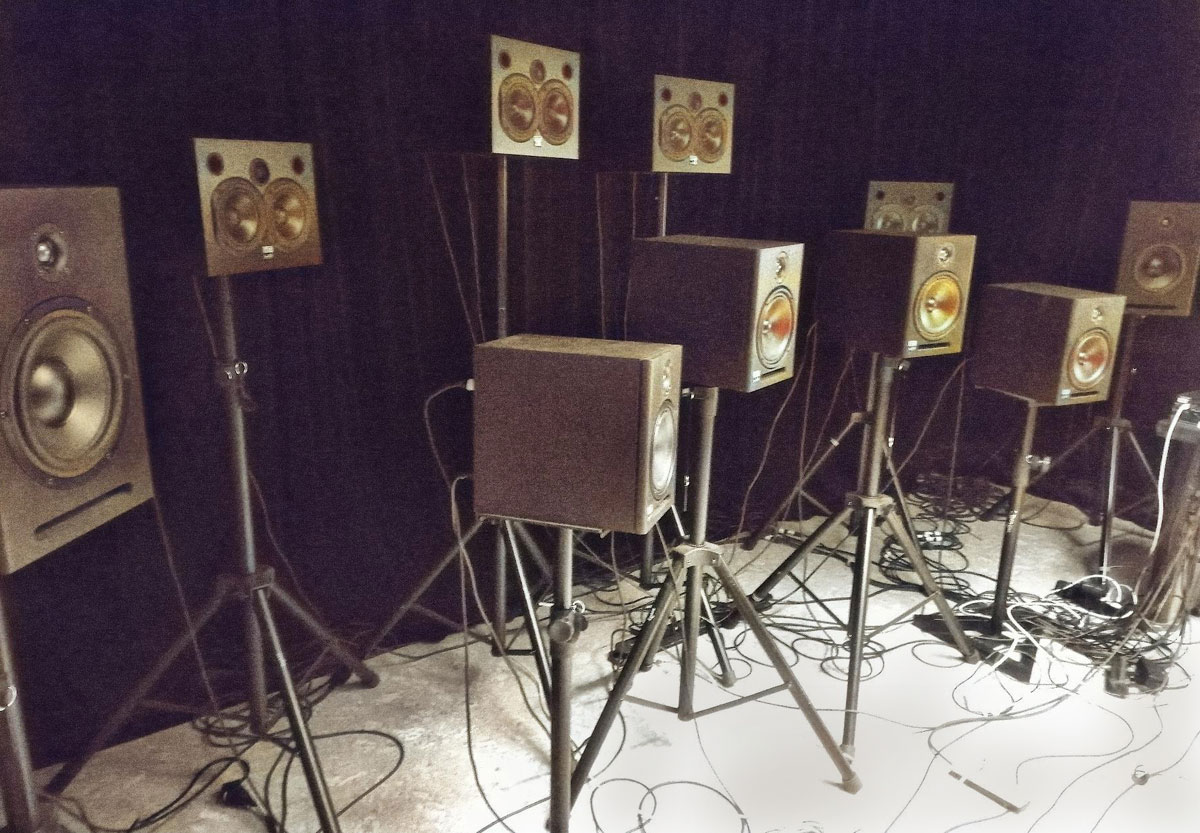
Écoutilles - listening room (creation)
Écoutilles (meaning hatches, a generic title suggested by Céline Rallet) is a multi channel structure conceived by composer/sound designer, Stephan Dunkelman, hosting several sound selection programs, as well as performances throughout the City Sonic itinerary, in Louvain-la-Neuve.
Following a research – creation residency on the island of Comacina (Lake Como), in August 2019, Stephan Dunkelman developed spatial projection modules, which differ from those generally proposed (stereo, surround multiphony). He was able to revisit and optimize the different spatial scenarios set up for visual artists. He also found ways to transpose 3D projections to 2D (plane) or 1D (line) modules. This allows him today to provide different options: monome or polynomial, and sound projection devices in volume, surface and or line.
The configuration of these listening chambers is that of an inclined flat surface, which can accommodate the following:
– stereophonic works with multiplied diffusion points, giving a better listening density of diffusion than that of a simple stereophony.
– multiphonic works (for 4 to 8 tracks) whose 3D movements are redeployed on a flat surface that gives a more detailed listening, as well as a more horizontal reading of writing in space perimeter, by visual fields. This device, presented for the first time in the framework of City Sonic#16, takes into consideration the fact that we often analyze sound movements better when emitted via loudspeakers that we see, and that the gaze influences our listening despite us.
Production: Stephan Dunkelman with the support of Transcultures and WBI as part of the bilateral relations program Wallonia-Brussels Federation/Italia.
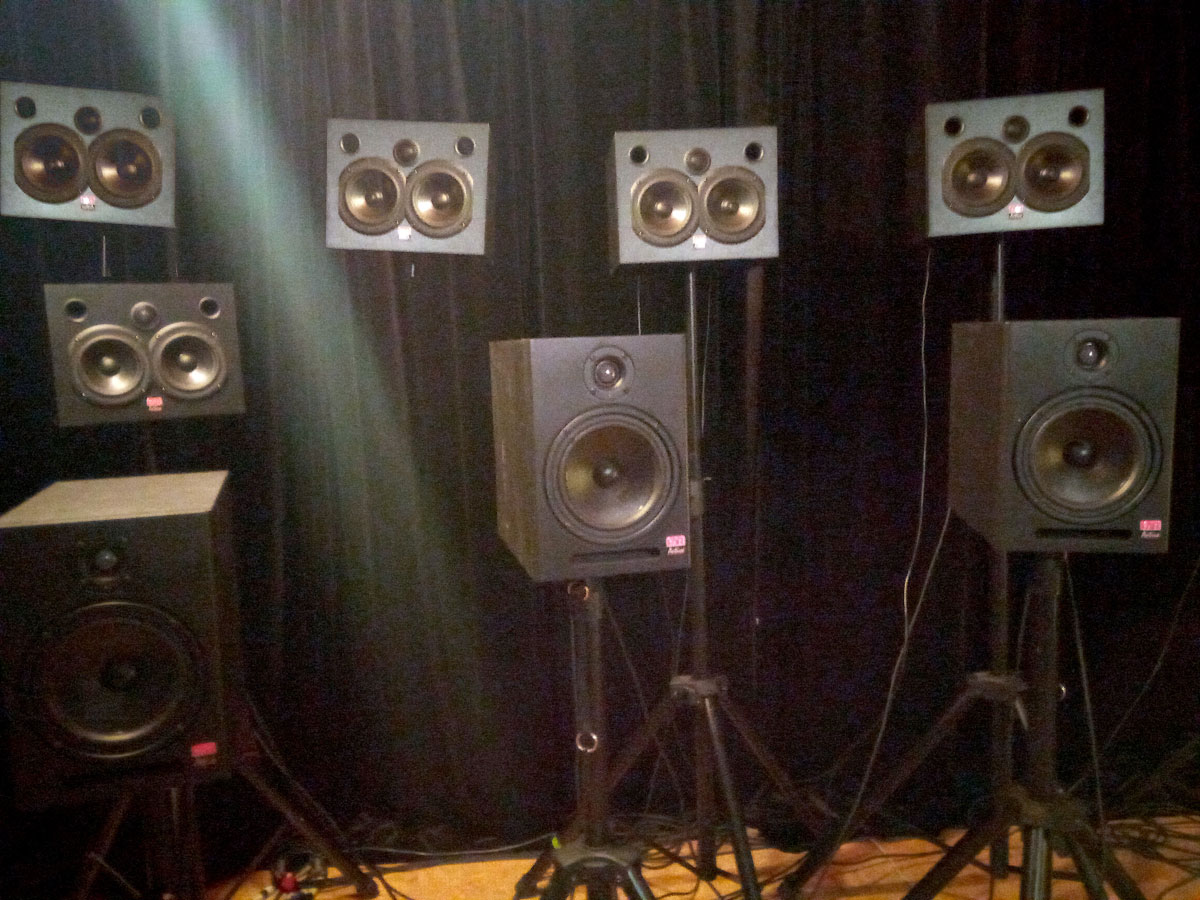
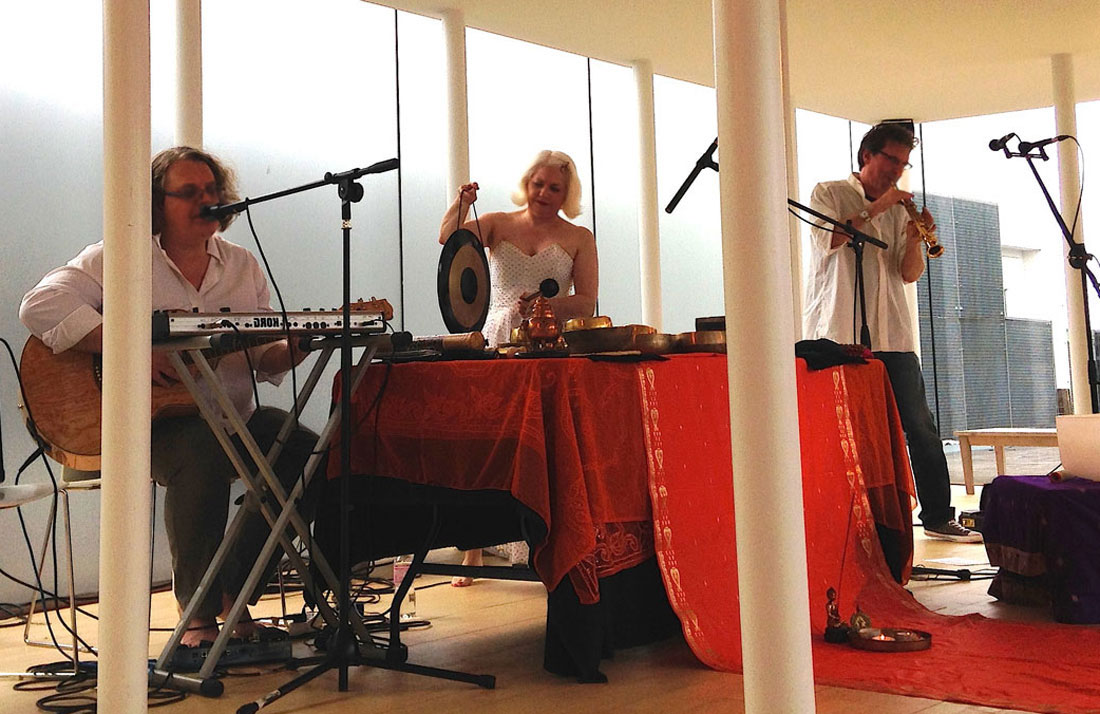
Concert
Playing Tibetan, Indian, Vietnamese bowls, gongs and other Asian ritual objects, Isa Belle and Paradise Now offer meditative environmental pieces based mainly on acoustic vibrations. With these dialogues of electronic sequences (Stephan Dunkelman), guitaristic landscape (Paradise Now) and the free and matierist sopranino saxophone played by Maurice Charles JJ. A unique transsonic harmonizing “comprovisational” experience!
Co-creation Isa Belle (Fr/Be) + Paradise Now (Be) + Stephan Dunkelman (Be) + Maurice Charles JJ (Be).
Production: Transcultures.

Musical hypothesis
The musical pieces presented in these Écoutilles (hatches) are “open sites”. They are working hypotheses, fixed in the sound universe, but which leave a space of creation to those who wish to take a place and to propose an additional voice; whether it is music, sound or even dance or calligraphy. These are also music for listening, that unlike concert music, are more dense, and leave an important place for those who prefer their dream, immediate and free music.
Biography
As a composer, Stephan Dunkelman (Brussels) has participated in numerous art projects and has won several awards at international competitions. His collaborations with artists of various disciplines have opened infinite fields of creation and experimentation for him. His music is involved in projects of development of scenographies, choreographies (Michel Kelemenis, Michèle Noiret), exhibitions (Angel Vergara, Phil Billen), and contributes to the work of filmmakers (André Dartevelle, Wim Vandekeybus), directors (Derek Goldby), and even musicians (Michaël Grébil). His work consists of joining together animated time and space. It is a question of developing, to one side, spatial expressions for the musical, to integrate these into already existing ones, drawing during the course of realization while that of new expressions of the time are revealed. It is a question of modulating, on the other side, sound motifs chosen for their morphological or imaginary qualities, by lighting up their rhiza to energize them. This is also to play with the mental images that they suggest, and thus to perceive the nature of animated phenomena that flow from it.
